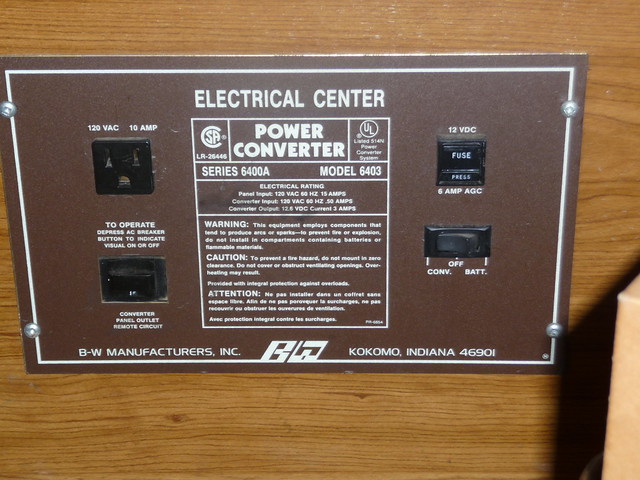

Remain coiled up inside the camper's "mousehole". Would use this type of adapter if there was any possibility that the power cord was damaged.Īnd if I used this type of adapter, I don't think I would allow the camper's electrical cord to I don't think this is a serious risk, but it is something to be mindful of. This could potentially cause the cord to overheat and cause aįire. But there is a slight possibility of damage to the cord (which is not quiteīad enough to be a total short circuit) which would cause the cord to be carrying more than theģ0 amps for which it is designed. The circuit breakers inside the camper protect the wiring inside the camper.Īnd the circuit breaker at the campground protects everything in case of a total short circuitĪnywhere in the system. This is because there is a slight risk of fire if there is damage to the This type ofĪdapter is not UL or CSA listed, meaning that these safety testing agencies have never "signed There is one safety factor you need to be aware of when using this type of adapter. If I did need one, I wouldn't hesitate to use one. I've never had occasion to need one of these, since I've never been at one of those rare sites that To do so, you will need an adapter that looks like this: It is possible to plug your 30-amp RV into one of these 50 amp outlets, but with some caution. This is known as a "50 amp" outlet, and is also capable of supplying 240 volts, for the "big rigs". Instead, they will have an outlet that looks like this: It's very rare, but there might be a few campsites that don't have either of the plugs shown above. The door of the camper, and it gets used frequently. The correct adapter can save a great deal of aggravation. Situation where this outlet is not available, but a normal household outlet is available. However, occasionally, you will run into a

Have the correct 30 amp outlet to fit your camper. When you get this RV adapter plug, it's a good idea to keep it in your camper. If you can't find them locally, they are available on This is a case where paying a couple extra dollars will pay off.Ĭanada: In Canada, these adapters should also be available at a well-stocked hardware store. It will certainly get you through a weekend just fine, but it's notĪ very good long-term solution.

The "hockey puck" is not as durable, because it can get hot during While the "hockey puck" will work just fine, I recommend spending a couple of dollars extra to In some cases,īecause of their smaller size, they might be slightly more convenient. If the store is out of the "dogbone"Īdapters and you need to plug in your trailer, then they will certainly do the job. They are sold at the same places, and cost a few dollars less.

There is another type of RV plug adapter on the market, which is commonly known as a "hockey puck". You simply plug the camper into the "dogbone", and then plug that into the wall, and you're all You can order online and pick up the adapter, usually the same day, at any One convenient way to get the adapter is to order from WalMart. This RV adapter is also available from Harbor Freight at the link below:ģ0 Amp Female to 15 Amp Male RV Pigtail Power Adapter If you're going to buy it locally, it's handy to print the Amazon page and take it with you to make sure you're getting the right one. This adapter is available from Amazon at the link below:Ĭonntek 14200 RV 1.5-Foot Pigtail Adapter Power Cord 15 Amp Male Plug To 30 Amp RV Female Connector The best type of adapter to use is commonly known as a "dogbone", since that's what it Helpful to bring along a picture of what you need, since the larger plug is used mostly on RV's,Īnd not everyone will be familiar with it.) You can also find them online from the links below. (If you buy it at a hardware store, it might be You can find the RV power adapter atĪnd possibly at well-stocked hardware stores. These are widely available and very inexpensive. Of course, you will need an adapter to make the camper's plug fit your home outlet. The only difference is that the plug that is on the camper, and which is found at mostĬampgrounds, is capable of supplying more current (30 amps) than a normal household outlet. The answer to that question is "yes", but with a couple of qualifications, which I'll discuss in aīoth types of outlets supply the normal 120 volt household current, so it is quite easy to plug inĪt home. Therefore, it's not uncommon for new owners of popups or other RV's to ask whether they can Your home, on the other hand, probably has outlets that look something like this: Most smaller recreational vehicles have a plug that looks like this: Power Adapters for Pop Up Campers and RV's


 0 kommentar(er)
0 kommentar(er)
